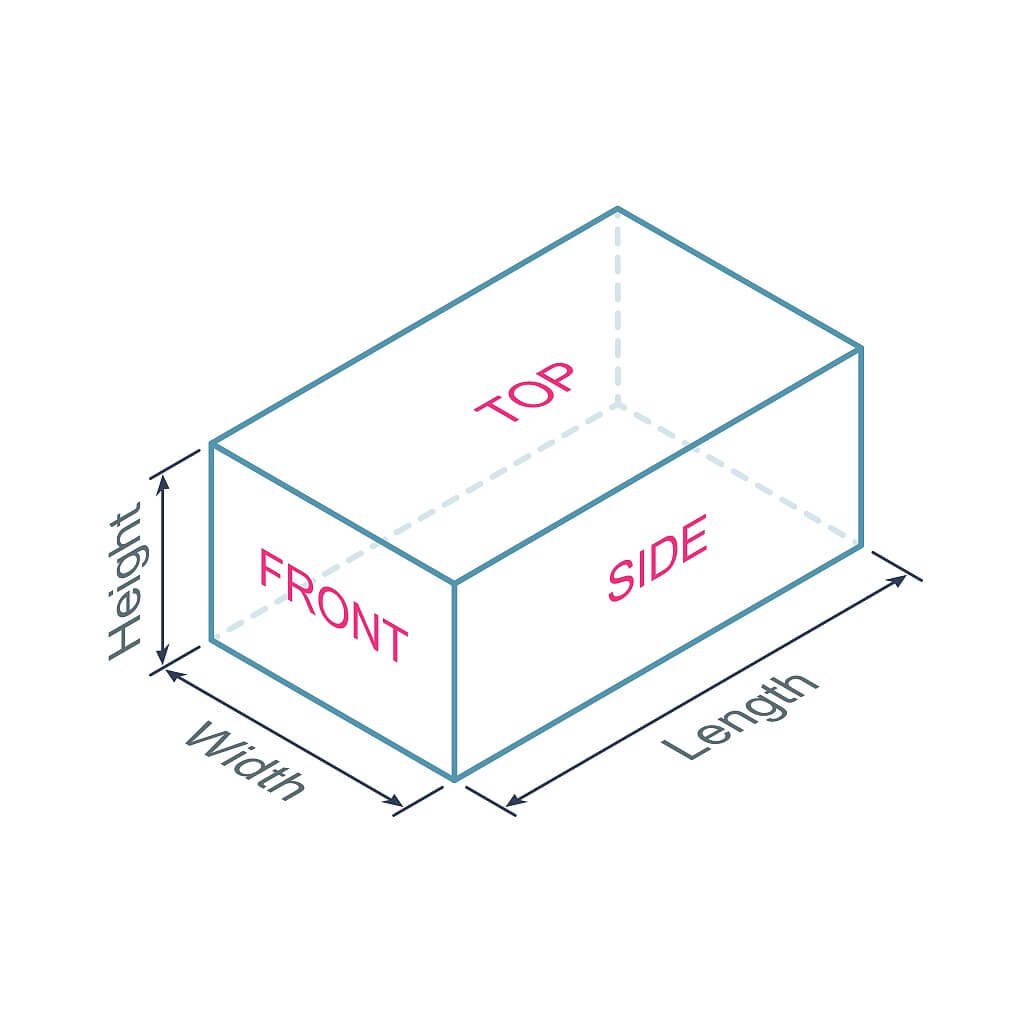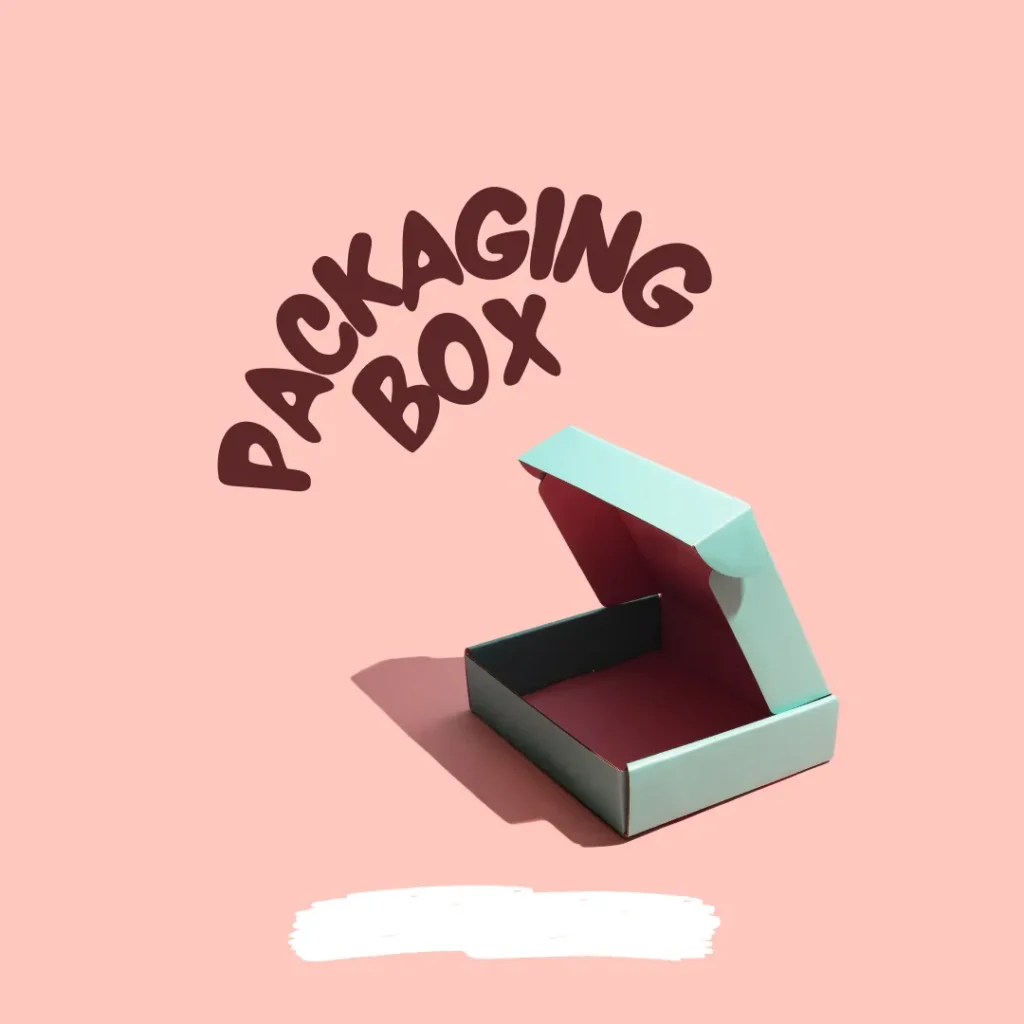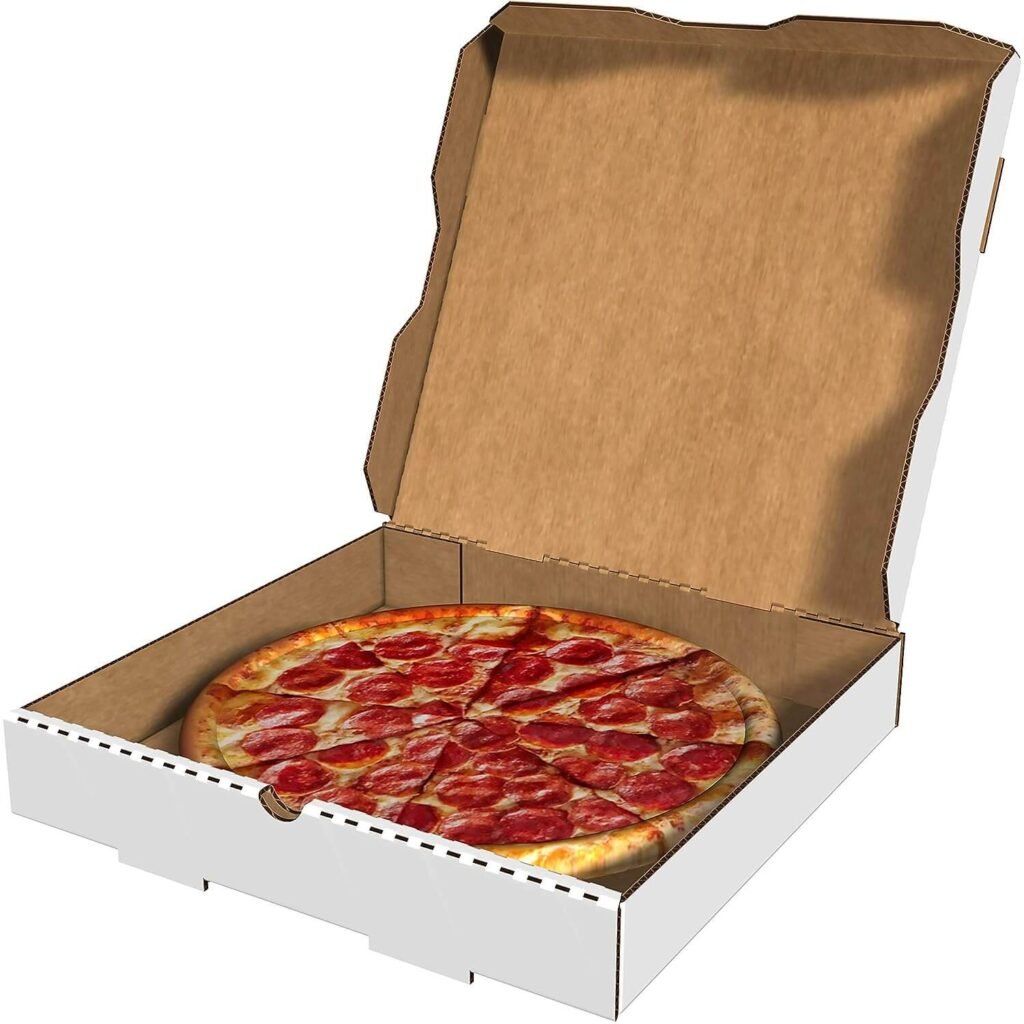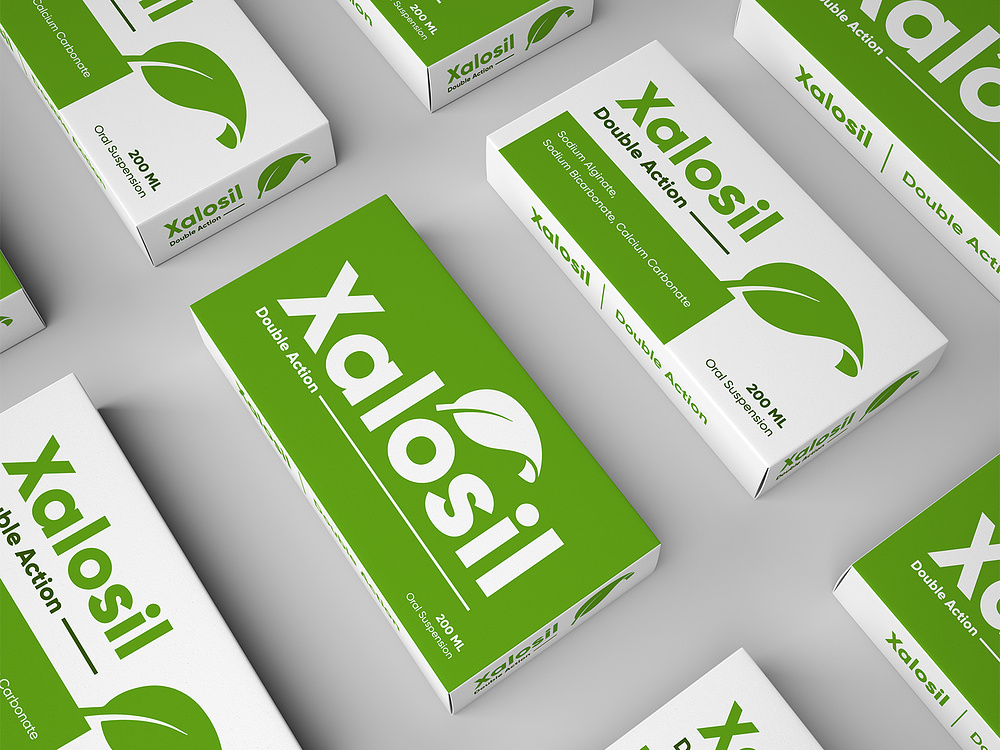In the custom packaging industry, it’s important to have a good understanding of box dimensions. Knowing the exact measurements of a box can help you determine how much space you need for storage or how much shipping costs will be. In this article, we’ll cover everything you need to know about box dimensions, including how to measure a box and record its length, width, and height.
How to Measure a Box: Step-by-Step Guide
Measuring a box may seem like a straightforward task, but there are actually a few key steps to ensure accuracy. Here’s a step-by-step guide on how to measure a box:
Step 1: Flatten the box
Before you can measure a box, you need to ensure that it’s completely flat. Open up any flaps and make sure the sides are all pushed in. This will help you get an accurate measurement of the box’s dimensions.
Step 2: Measure the length
The length of a box is the longest side, and it’s measured from one end to the other. Use a tape measure or ruler to measure the distance between the two opposite ends of the box. Make sure you measure from the inside of the box, as this will give you a more accurate measurement.
Step 3: Measure the width
The width of a box is the shorter side that runs perpendicular to the length. Measure the distance between the two opposite sides of the box. Again, make sure you measure from the inside of the box for accuracy.
Step 4: Measure the height
The height of a box is the side that runs perpendicular to both the length and width. Measure the distance between the top and bottom of the box. Remember to measure from the inside of the box.
Step 5: Record the box dimensions
After measuring the length, width, and height of the box, record the measurements in inches. Write them down in the format of L x W x H. For example, if the length is 10 inches, the width is 8 inches, and the height is 6 inches, write down the dimensions as 10″ x 8″ x 6″.
Step 6: Calculate the box volume
Once you have recorded the box dimensions, you can calculate the volume of the box. The volume of the box is the amount of space inside the box, measured in cubic inches. To calculate the volume, simply multiply the length by the width by the height. For example, if the box dimensions are 10″ x 8″ x 6″, the volume would be 480 cubic inches (10 x 8 x 6 = 480).
Step 7: Check the box measurements
After measuring and recording the box dimensions, it is important to double-check the measurements for accuracy. Make sure all measurements are recorded correctly and that the length, width, and height are in the correct order. If the box is not a perfect rectangle, take multiple measurements from different angles to ensure accuracy.
Step 8: Use the box dimensions for shipping
The box dimensions are essential information for shipping a package. Shipping carriers use box dimensions to calculate the dimensional weight of a package, which can affect the shipping cost. Make sure to use the recorded box dimensions when filling out shipping labels and when choosing a shipping service.
Measuring a box may seem like a simple task, but it is an important step in the shipping process. By following these steps, you can accurately measure the dimensions of a box and calculate its volume. Remember to double-check the measurements for accuracy and to use the recorded box dimensions when shipping the package. With these tips, you can ensure that your package is shipped safely and efficiently.

Tips and Tricks for Measuring Box Dimensions
Here are a few tips and tricks to help you measure box dimensions accurately:
Use a ruler or tape measure with clear markings for accurate measurements.
- Measure from the inside of the box to get precise measurements.
- Use a level surface to ensure that the box is flat and level when measuring.
- If you’re measuring multiple boxes, label each box with its dimensions to avoid confusion.
- When shipping items, add a little extra space to the box dimensions to ensure that the items fit comfortably inside.
Box Measurements: Length, Width, and Height
Now that you know how to measure a box, let’s take a closer look at the three measurements you’ll need to record: length, width, and height.
Length:
The length of a box is the longest side and is always the first measurement listed. This measurement is important when determining the size of a package or storage space. For example, if you’re shipping a long item, you’ll need to make sure that the box you use is at least as long as the item itself.
Width:
The width of a box is the shorter side that runs perpendicular to the length. This measurement is important when determining how much space an item will take up in a storage area or how much material you’ll need to pack around it.
Height:
The height of a box is the side that runs perpendicular to both the length and width. This measurement is important when determining how tall an item is and how much space
Box Styles Explained: How Boxes Are Built
When it comes to shipping or storing items, choosing the right box style is important for protecting your items and ensuring they arrive in good condition. Box styles can vary in shape and construction, and understanding the different types can help you make an informed decision about which style is best suited for your needs. Corrugated boxes are widely used in the shipping industry due to their durability, strength, and ability to protect their contents during transport. They are made up of several layers of paperboard that are sandwiched together to create a sturdy structure. We’ll explore the different box styles available and how they are constructed.
Regular Slotted Container (RSC)
The regular slotted container, or RSC, is the most common box style used in shipping and packaging. It consists of four flaps that are all the same length, with the two outer flaps meeting in the middle when the box is folded. The RSC is versatile and can be used for a wide range of products, making it a popular choice for many businesses.
Half Slotted Container (HSC)
The half slotted container, or HSC, is similar to the RSC but only has one set of flaps. This makes it an ideal option for products that need to be loaded and unloaded quickly, as the top can be easily removed. The HSC is often used for items that are too large for a regular slotted container, such as furniture or large appliances.
Full Overlap Slotted Container (FOL)
The full overlap slotted container, or FOL, has flaps that fully overlap, providing extra strength and protection for heavier items. This style is commonly used for products that require added support during shipping or storage, such as large machinery or industrial parts.
One Piece Folder (OPF)
The one-piece folder, or OPF, is a flat box that folds into itself, creating a self-locking structure. It is often used for books, documents, and other flat items, as it provides added protection and stability during shipping.
Five Panel Folder (FPF)
The five panel folder, or FPF, is a box style that is similar to the OPF but has an additional panel that can be folded down to create a lid. This style is commonly used for large, flat items that require added protection during shipping.
Double Cover Box (DC)
This box style has two covers that overlap, providing extra protection for fragile items. DCs are often used for electronic devices or other fragile items that require additional cushioning.
Full Telescope Design (FTD)
This box style consists of a top and bottom piece that fit together to create a sturdy container. FTDs are ideal for larger, heavier items that require extra strength and protection.
When choosing a style of corrugated box, it is important to consider the weight and fragility of the contents as well as the mode of transportation and any special handling requirements. By selecting the right box style for your specific needs, you can ensure that your items arrive at their destination safely and intact.
Box Measurements
When referring to box measurements, they are typically listed as Length x Width x Height. For example, if you have a box that is 12 inches long, 8 inches wide, and 6 inches high, the measurements would be listed as 12” x 8” x 6”.
It’s important to note that when selecting a box for shipping, you’ll want to choose a box that is slightly larger than your item to allow for added protection and cushioning materials. Most shipping companies recommend leaving at least two inches of space between your item and the walls of the box.
In conclusion, choosing the right box style and measuring your box correctly are important factors in ensuring your items are protected during shipping or storage. Understanding the different box styles available and how they are constructed can help you make an informed decision about which style is best suited for your needs. Remember to always select a box that is slightly larger than your item to allow for added protection, and consider using cushioning materials to further protect your items during transit.
Consider How Packaging Fill Impacts Box Dimensions
When measuring the dimensions of a box, it’s important to consider how the packaging fill, such as packing peanuts or bubble wrap, will impact the measurements. If the box will be filled with packaging material, it’s best to measure the outside dimensions of the box after it has been filled.
To do this, simply pack the box with the desired amount of packaging fill, then use a ruler or tape measure to measure the outside dimensions of the box. Make sure to measure the length, width, and height at their widest points, including any bulges or irregularities caused by the packaging fill.
It’s important to note that the packaging fill can also affect the weight of the box, so it’s a good idea to factor this in when calculating shipping costs. Many shipping carriers have weight limits for packages, so it’s important to make sure the weight of the filled box falls within these limits to avoid additional fees or delays in shipping.

The Importance of Internal Dimensions
When selecting a box for your shipment, it’s not just the external dimensions that matter. The internal dimensions are also important, as they determine how much space you have to pack your items and how much padding or cushioning you need to add to protect them during transit.
To measure the internal dimensions of a box, you’ll need to subtract the thickness of the cardboard walls from the external measurements. For example, if you have a box that is 12 inches long, 8 inches wide, and 10 inches tall, with cardboard that is 1/4 inch thick, the internal dimensions would be 11.5 inches long, 7.5 inches wide, and 9.5 inches tall.
It’s important to consider the internal dimensions when selecting a box, as you don’t want your items to be too snug or too loose inside. If the box is too small, you risk damaging your items during shipment. If the box is too large, your items may shift around during transit, leading to damage or breakage.
You should also consider the weight of your items and the strength of the box when selecting a box size. A box that is too large for your items may be too heavy to lift safely, and a box that is too small may not be able to support the weight of your items.
In addition to the internal dimensions, it’s important to consider the shape of the box. Some items may require a box with a specific shape or structure, such as a tube or a triangular prism, to ensure a snug fit and proper protection during shipping.
Overall, it’s important to take the time to select the right box size and shape for your shipment to ensure your items arrive safely and undamaged.
The Issue of External Dimensions
When selecting a box, it is important to consider not only the internal dimensions, but also the external dimensions. This is because the external dimensions of a box will impact its shipping and handling costs, as well as its storage requirements.
For example, if a box is too large for its contents, it will take up more space in a truck or on a shelf, which can increase transportation and storage costs. On the other hand, if a box is too small for its contents, it can put the items at risk of damage during shipping.
To avoid these issues, it is important to find a box with external dimensions that are appropriate for the contents being shipped. Some tips for selecting the right box size include:
Measure the contents: Before selecting a box, measure the contents to determine their dimensions. This will help you select a box that is not too big or too small.
Consider the weight: If the contents are heavy, it is important to choose a box that can support their weight. This may require selecting a box with thicker walls or a double-layered design.
Factor in cushioning: If the contents are fragile or delicate, it is important to leave enough space in the box for cushioning material, such as bubble wrap or packing peanuts.
Think about shipping costs: Consider the shipping method and distance when selecting a box size. Larger boxes may incur higher shipping costs, especially if they are being shipped long distances.
By taking these factors into account, you can select a box with external dimensions that will provide adequate protection for the contents while minimizing shipping and storage costs.
How to Pick the Right Box Size
Choosing the right box size is an important aspect of the packaging and shipping process. A box that is too small can damage the contents inside, while a box that is too large can lead to wasted space and higher shipping costs. Here are some tips to help you pick the right box size for your packaging needs.
Measure your item(s): The first step in picking the right box size is to measure the item(s) you want to ship. Use a measuring tape to measure the length, width, and height of the largest item in the group. Round up to the nearest inch to ensure a snug fit.
Consider the weight: The weight of your item(s) will also be a factor in choosing the right box size. If you have a heavy item, you will need a box that is strong enough to support it.
Choose a box with some extra space: It’s always better to choose a box that is slightly larger than your item(s) to allow for some extra space. This will give you room to add cushioning material to protect your items during shipping.
Choose a box with the right strength: The strength of a box is measured by its “bursting test” or “edge crush test” rating. These tests measure the amount of pressure a box can withstand before it ruptures or deforms. Choose a box with a strength rating that matches the weight of your item(s).
Consider the shipping method: The shipping method you choose can also impact the box size you need. If you are shipping via air, you may need to choose a smaller box to meet weight restrictions. If you are shipping via ground, you may have more flexibility with box size.
Get creative with custom boxes: If you can’t find a standard box size that fits your needs, consider ordering custom boxes. Many packaging companies offer custom box options that can be tailored to your specific dimensions and strength requirements.
By following these tips, you can ensure that your items are properly protected during shipping and arrive at their destination safely.
Final Thoughts
No matter the size or shape of the item you need to ship to a customer, there is undoubtedly a box available that will transport it safely and stylishly.
Just as you would carefully plan out other aspects of your business, it’s crucial to consider your boxing and shipping needs before making any material purchases. Remember, it’s not only the size of the item that dictates the appropriate box size and style but also the level of protection needed for safe transport. Whether you’re aiming to impress with a memorable unboxing experience or sticking to a budget, finding the right box is essential.
Don’t hesitate to measure your products accurately to ensure you choose the perfect boxes for your unique needs. If you need assistance with measuring your products to determine the appropriate box size, the team of custom packaging specialists at Fuyo Packaging is always available to help. Our team of experienced graphic artists and engineers will guide you through the packaging process, ensuring that you take your packaging to the next level. Request a free consultation today to get started. Visit Fuyopackaging and speak to us regarding your Custom Packaging project.







